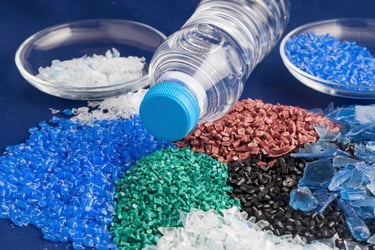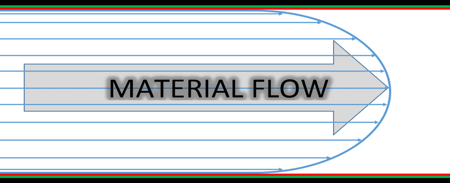 This can be a continuous issue depending on geographical location and seasonal temperature. Tower Water in the warmer climate states would be an issue running year round, due to outside temperature. More variation is seen in northern states due to seasonal changes.
This can be a continuous issue depending on geographical location and seasonal temperature. Tower Water in the warmer climate states would be an issue running year round, due to outside temperature. More variation is seen in northern states due to seasonal changes.
There are so many other factors such as untreated water, flow, delivery and return systems, and capacity, just to name a few.
First, you will be able to set the temperature of the Chiller to your preferred setting. This setting should be dictated by the materials you are processing. The HDT (Heat Deflection Temperature) will be a factor in this process. All changes should be documented during the process change. A Thermal Imaging camera is an awesome tool to use during documenting the changes (before and after) and they are relatively inexpensive now. The DTUL (Deflection temperature under load) is a measurement of the HDT, that is normally supplied by your material supplier. The HDT can be effected by part thickness and part geometry.
Processes using both Tower and Chiller should be documented, just in case the Chiller ever goes down and you may have to use the Tower as backup until it is repaired.
Switching to Chiller water will aid in cycle time reduction due to removing the heat at a faster rate. This depends on material properties and intent of final product. Although cooling rates of electrical parts can drastically effect the conductivity of the electrical component molded.
Moving your process to Chiller Water from Tower Water will require a new process to be set up.
Running colder molds will require an increase in fill time and pressure (actual fill pressure will increase on its own, just make sure you are not running pressure limited). Transfer position will probably need to be decreased slightly due to melt front not extending as far. Fill speed may be increased to help in keeping fill time lower, but may cause shear issues at gate, which may cause delamination, gloss or other defects.
Therefore, fill time may need to be slightly longer to achieve a 90% to 95% fill only weight. Pack pressure will need to be increased, packing out the part properly to align the molecules causing proper orientation, resulting in less warpage. This will decrease the chance of warping issues, as well as part breakage, as a result of inconsistent cooling rate.
If you’d like more information on how to improve efficiency, reduce wasted resin, minimize scrap after color and material changes in your facility, email me directly or leave a note in the comments section below.
Learn more about improving your profitability with proper purging compounds and processes.








Comments